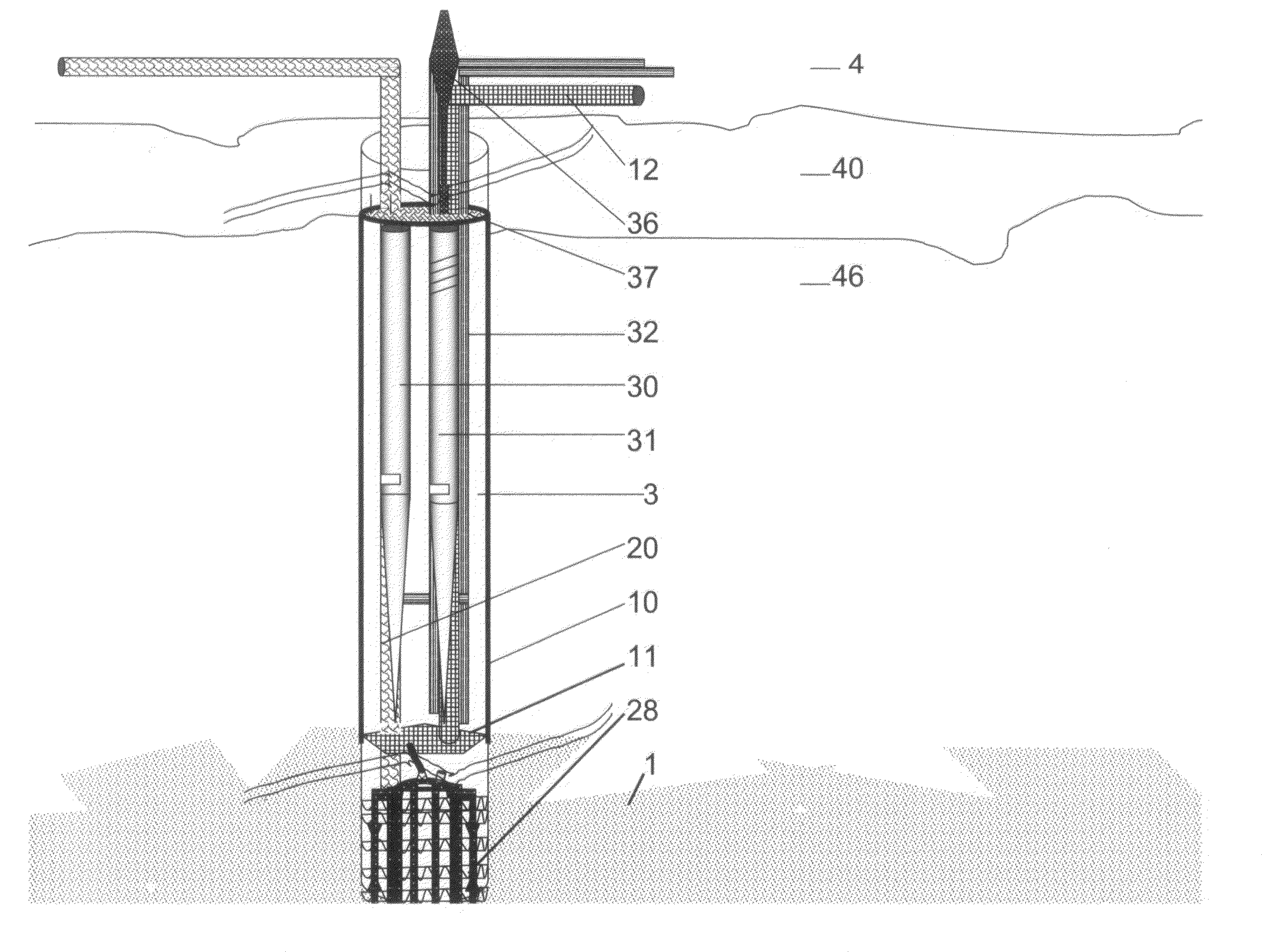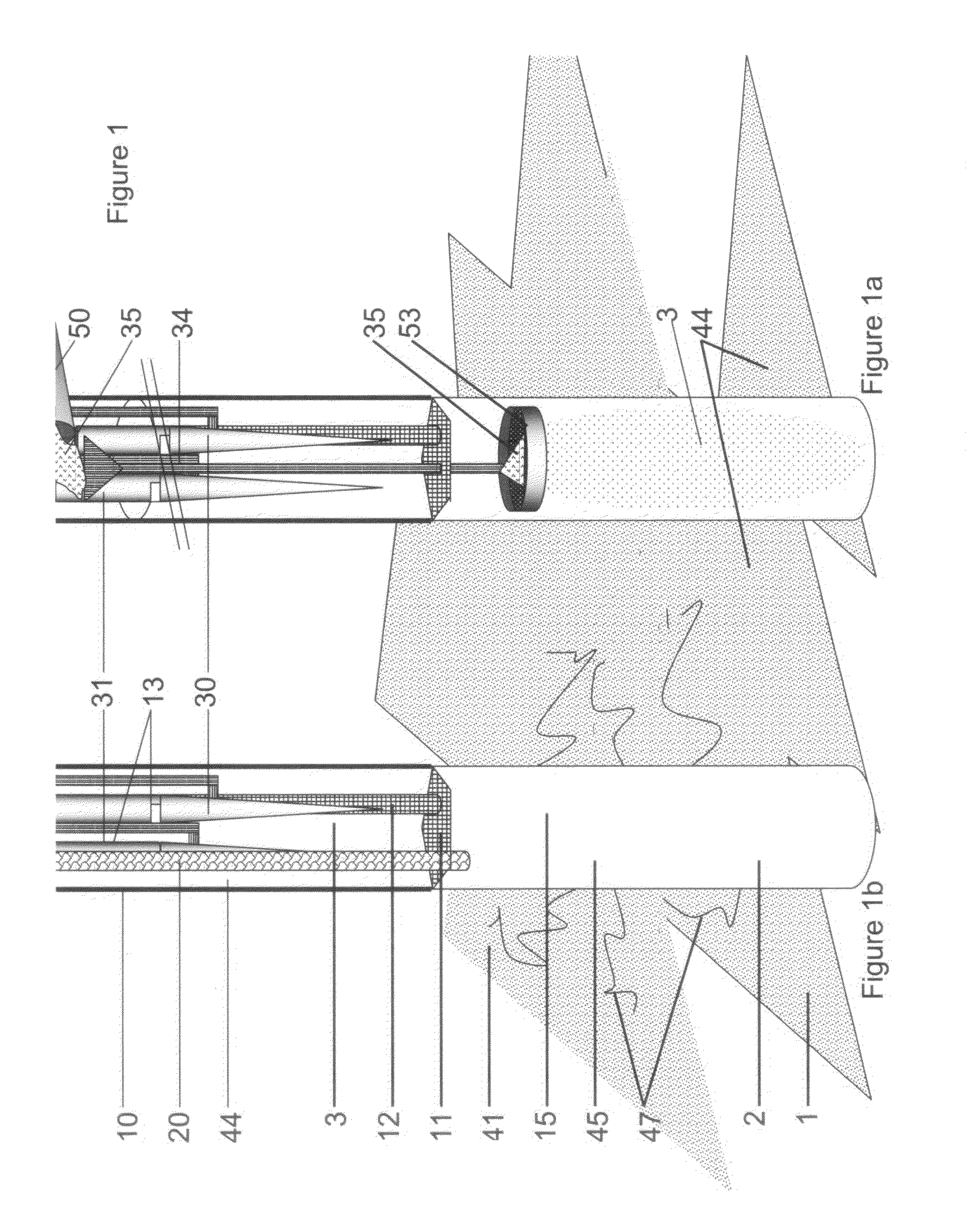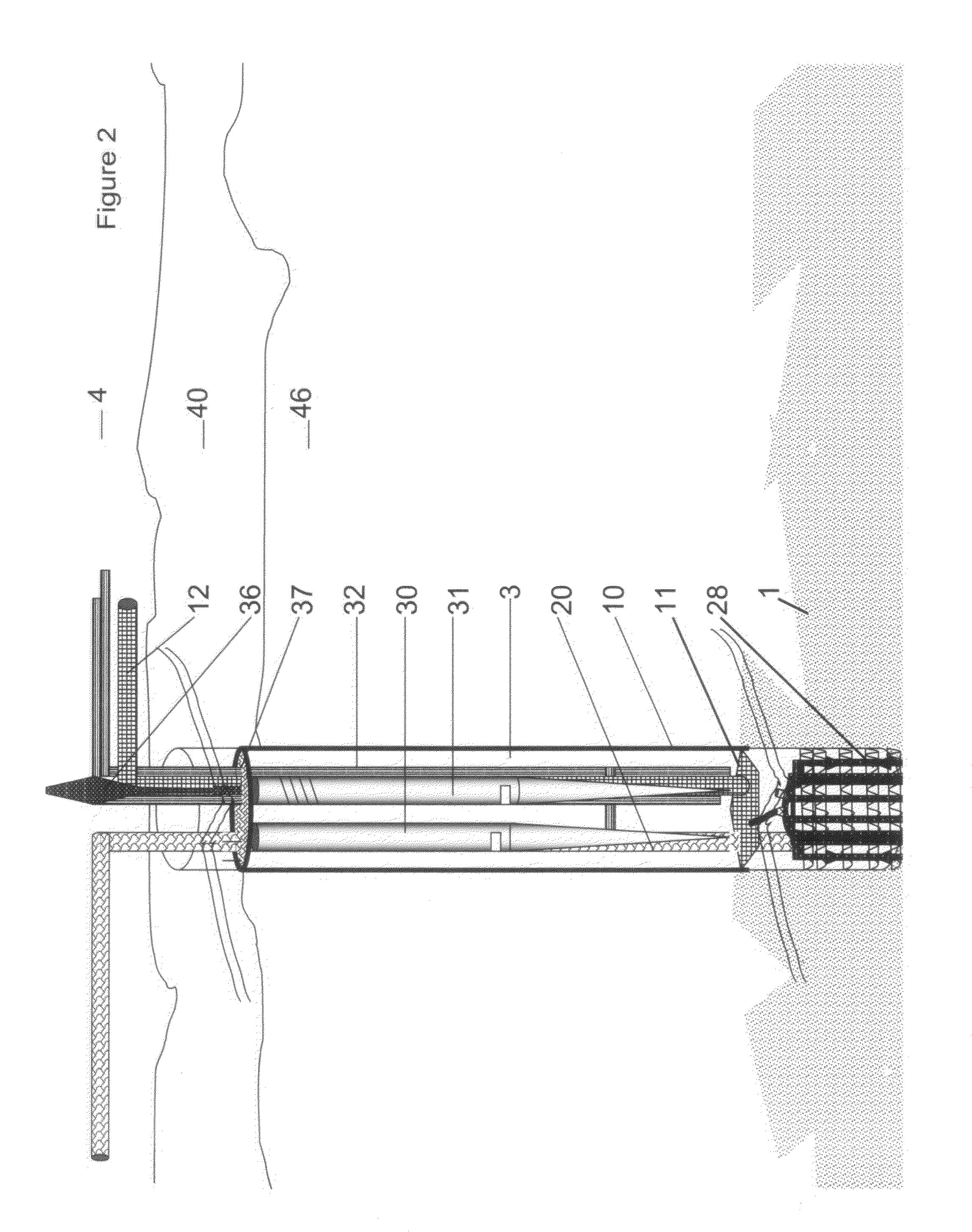Harvesting hydrocarbons and water from methane hydrate deposits and shale seams
a technology of methane hydrate and hydrocarbons, which is applied in the direction of separation process, insulation, and wellbore/well accessories, etc., can solve the problems of bringing contaminants, increasing the hydrate component of the material, and difficult extraction, so as to reduce the oxygen level and reduce the temperature of the extraction zone
- Summary
- Abstract
- Description
- Claims
- Application Information
AI Technical Summary
Benefits of technology
Problems solved by technology
Method used
Image
Examples
Embodiment Construction
[0065]Turning now to the drawings and initially to FIGS. 1-2, showing the center, lower section and top of the drill hole for extracting fuel hydrocarbons from Methane hydrate. In FIG. 1, the Methane hydrate deposit 1 is cooled with evaporating Liquid Nitrogen to brittle cold in FIG. 1a, and then vibrated with sound at both the frequency of the standard organ pipe 30 and the frequency difference beats created by the adjustable frequency organ pipe 31 that can vary widely with the tuning of the adjustable pipe in FIG. 1b. The purpose of this ground stimulation is break up the seam structure when brittle cold, and then continued through the heating phase FIG. 2 to get air throughout the deposit 1 such that the heat evaporated Methane and water escape the structure of the deposit. If the initial cold separates Methane from water, the water will freeze providing the ice encirclement and the Methane will be drawn with the Nitrogen.
[0066]FIG. 1 shows both the preparatory cryogenic freezin...
PUM
| Property | Measurement | Unit |
|---|---|---|
| boiling point | aaaaa | aaaaa |
| depths | aaaaa | aaaaa |
| depth | aaaaa | aaaaa |
Abstract
Description
Claims
Application Information
 Login to View More
Login to View More - R&D
- Intellectual Property
- Life Sciences
- Materials
- Tech Scout
- Unparalleled Data Quality
- Higher Quality Content
- 60% Fewer Hallucinations
Browse by: Latest US Patents, China's latest patents, Technical Efficacy Thesaurus, Application Domain, Technology Topic, Popular Technical Reports.
© 2025 PatSnap. All rights reserved.Legal|Privacy policy|Modern Slavery Act Transparency Statement|Sitemap|About US| Contact US: help@patsnap.com



